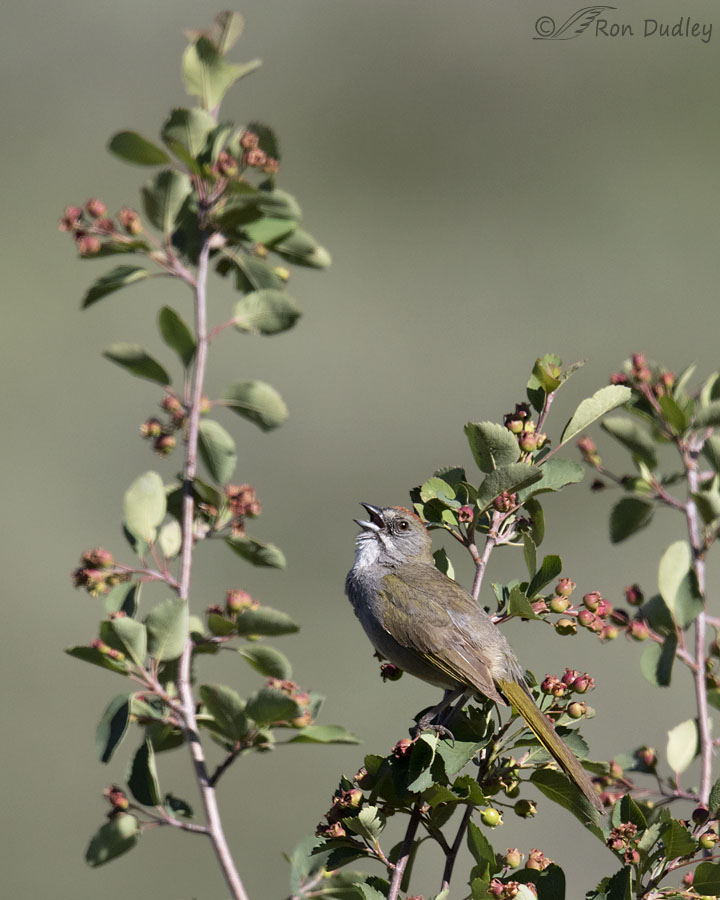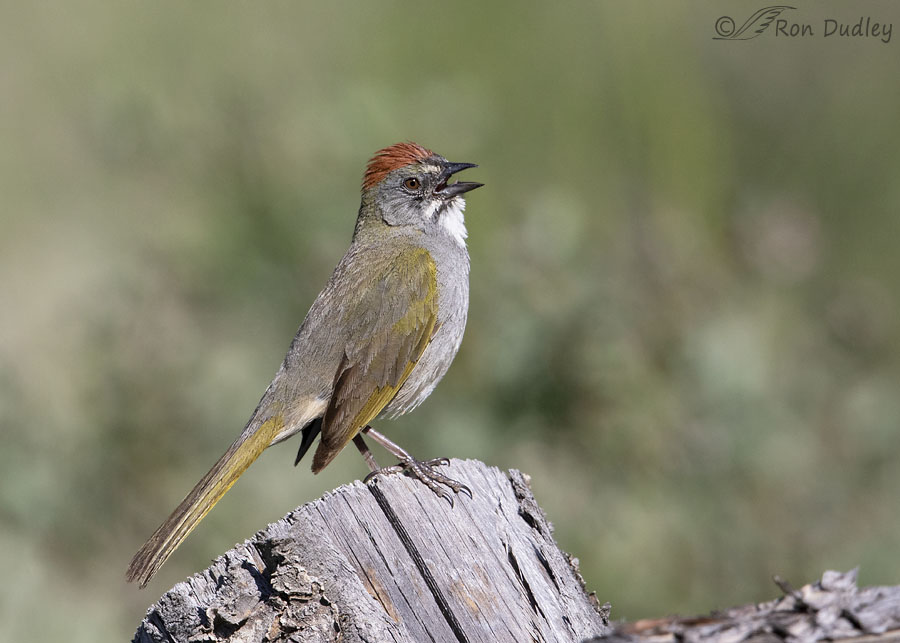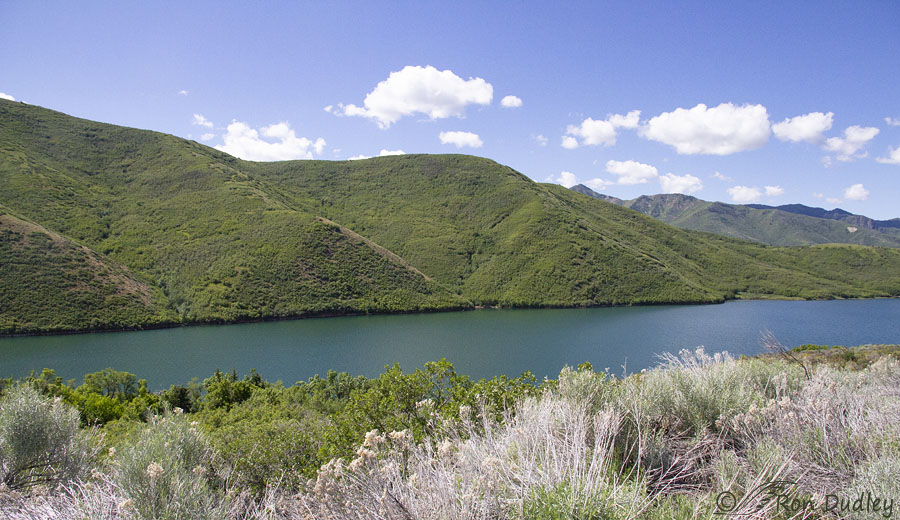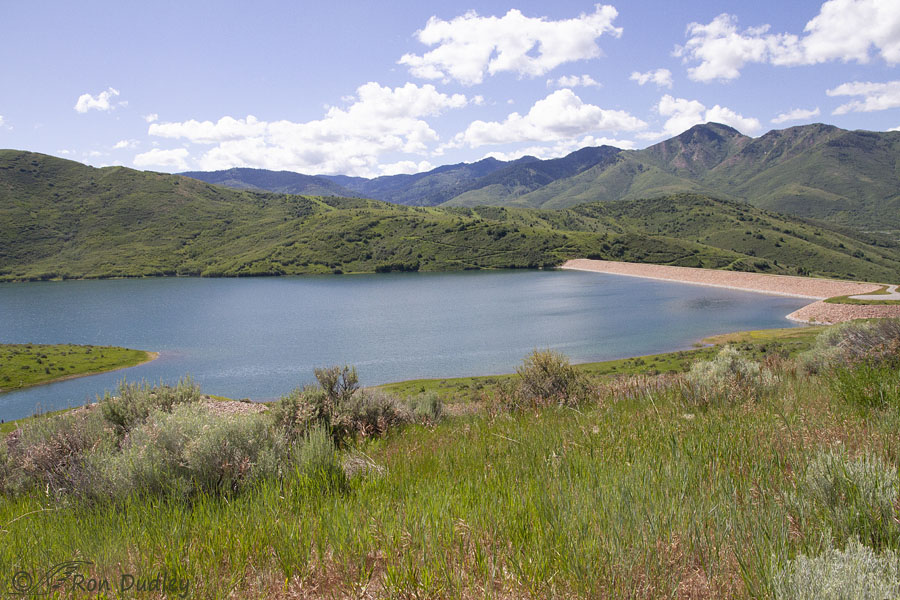‘Progress’ ain’t all it’s cracked up to be.

1/3200, f/6.3, ISO 800, Canon 7D Mark II, Canon EF 500mm f/4L IS II USM + EF 1.4 III Extender, not baited, set up or called in
Recently I’ve posted several closeup shots of male Green-tailed Towhees singing on territory from serviceberry bushes. They seem to have a special affinity for serviceberry perches but it goes without saying that I can’t always get close.
I found this bird on the same spot in the same serviceberry on several recent back-to-back trips to the mountains but he was far from the road and I made no attempt to approach him on foot so he’s small in the frame. Instead of fighting the out of focus branch in front of him I decided to work with it so I took this shot vertically and cropped the image accordingly.
It may not have much appeal for viewers and I understand that but it certainly shows the towhee in typical mixed shrub habitat.

1/4000, f/6.3, ISO 800, Canon 7D Mark II, Canon EF 500mm f/4L IS II USM + EF 1.4 III Extender, not baited, set up or called in
But like most birds Green-tailed Towhees have no aversion to man made perches and this one habitually perches on a weathered buck and rail fence. Thankfully this species can and does adapt to moderate human-caused habitat modification.
But there are some kinds of habitat modifications that no bird can adapt to.
I’ve mention in the past that Green-tailed Towhees were my ‘spark bird’. In the spring of 1969 I took an Ornithology class from the legendary Dr. William H. Behle at the University of Utah. As part of the lab for that class I was required to choose a study species and spend time with it in the field and then write up a report on what I’d observed.
With guidance from the teaching assistant for that class I chose the Green-tailed Towhee as my study species and spent many spring and early summer mornings in a delightful little valley in the Wasatch Mountains east of Salt Lake City observing towhees and other birds and wildlife going about their business.
It was that class that got me seriously hooked on birds and the Green-tailed Towhee has been a favorite of mine for over a half century now.

My towhee study area is now engulfed by Little Dell Reservoir, an impoundment constructed in the early 90’s for flood control and to supply culinary water for the Salt Lake Valley.
I spent countless hours down there in the bottom of the valley in the mixed shrub-steppe habitat required by towhees during nesting season. But today most of what’s left on the steep slopes higher up is the dense scrub oak habitat used by far fewer species of birds and other wildlife. And certainly not by Green-tailed Towhees.
The 250 acres of mixed habitat at the bottom of the valley vanished almost overnight.

This is the dam that backed up Dell Creek and created Little Dell Reservoir. When I photograph Green-tailed Towhees in the area where I’ve been finding them in recent years I have to drive right past Little Dell Reservoir on my way home. I suppose it’s a pretty little body of water to most who see it but my feelings about it are decidedly mixed.
Progress? I don’t think so.
Ron


And when we are young we think we are smart but when we get old we know we know nothing! Your photography is always appealing! Green towhees are such fun: loved watching them in Colorado by various canyons.
Greetings from New Mexico.
Little Dell seems like a pretty ironic name for that reservoir. I refuse to call those places lakes: they are reservoirs. I was one of the last people inside White Rock Canyon on the Rio Grande below Los Alamos when they created Cochiti Reservoir. I was helping to do salvage archaeology and documentation of the many petroglyphs found there. I was not doing “hard” birding but remember seeing many species along the river before it became a bathtub.
I saw my first Green-tailed Towhee in my suburban back yard in Golden, CO in the 80’s. Now I can’t find my old house on Google Earth because of all of the new subdivisions. I imagine the birding there would be pretty bad there now as well.
Like your Towhees and the scenery. Thanks for the photos/
Hi Ron,
Th first image certainly mets with my approval – always like to see birds in their habitat.
Another excellent and interesting post.
Thanks very much, Gary.
All this talk about earth tones makes me nostalgic for my hippie days. However, the Green-tailed Towhee is definitely from the Punk era, what with that head that was obviously dyed to make a statement. Of course, I have no idea what the statement is.
I linked to the Dr. Behle article. I can see why you hold him in such esteem. I linked to his doctoral advisor and the advisor to his advisor and on and on. A rabbit hole perhaps best not explored too deeply (racism rears its ugly but persistently evil head).
That indeed sounds like a rabbit hole, Lyle.
After Dr. Behle retired he continued to work on some of his projects from his office in the old Museum of Natural History Museum building. During many of those years I worked for the museum in the summers so we’d occasionally cross paths and I got to know him a little better on a personal level. I’ll tell you what, that guy knew his birds!
Green-tailed Towhees are such attractive birds — very late 60s/early 70s plumage with all the “Earth tones.” Thank you for sharing these lovelies with us today.
Thank you for sharing these lovelies with us today.
I’m reading a book about pioneer women in Kansas in the mid to late 19th century and while very interesting, some of the “progress” described in those pages breaks my heart.
Marty, maybe the earth tones are part of the reason I’m so partial to them. I’ve always been an earth tones kind’a guy.
Progress is a very mixed bag. For us and particularly for the other species with whom we share (or should share) the planet.
I do love the subtle beauty of your spark bird. And hope (fervently) that enough of its habitat remains.
EC. they’re doing OK as a species so apparently they’re pretty resilient.
What a lovely little jewel! I know many people are more drawn to the flashier, more colorful birds, but I’m often more drawn to those with the muted, more subtle plummages. When you look closely, the variations that produce that subtlety is pretty amazing! For example, in the sunlight, you can see violet hues in a redtail’s brown feathers! Who’d have expected THAT?
As for progress, I’m all for it as long as it doesn’t involve habitat loss or water, air or soil pollution.If you can do THAT, I’m all for it! Otherwise, not so much.
LOVE the quote from Mary Mayshark-Stavely, “It’s too soon we get old and too late we get smart.” Ain’t that the truth!
“I’m often more drawn to those with the muted, more subtle plumages:
Laura, I often feel the same way. For example I prefer the female Cardinal because the male is just too gaudy for me.
That really is a pretty setting, but definitely can understand your mixed feelings. As I read about the course you took I felt that it probably was the beginnings of your love of birds and photographing them. And I join you in appreciating Mary’s quote above. I grew up in suburban Philadelphia and in my younger days made countless trips up to Pennsylvania Dutch country.
That class changed my life, Everett. In good ways.
Beautiful Towhees…….. The spotted are what we have in the yard and they a fun to watch. Dams are a mixed blessing for sure particularly when they take out prime wildlife habitat or, in some areas of the world, cause whole populations of people to have to relocate usually to “sub-prime” property.
The spotted are what we have in the yard and they a fun to watch. Dams are a mixed blessing for sure particularly when they take out prime wildlife habitat or, in some areas of the world, cause whole populations of people to have to relocate usually to “sub-prime” property.  Of course, I love the 5 dams on the Missouri here and they do/have for MANY years, solved a lot of problems with flooding and provide hydroelectric power and water for many…… They have caused problems for Sturgeon tho. That’s a different situation from this one tho….
Of course, I love the 5 dams on the Missouri here and they do/have for MANY years, solved a lot of problems with flooding and provide hydroelectric power and water for many…… They have caused problems for Sturgeon tho. That’s a different situation from this one tho….
Judy, Given the absolutely crazy population increase in the Salt Lake Valley the dam probably had to be built. But I don’t have to like it.
They’re onto some other crazy thing for water in Utah somewhere as I understand it also……..”someday”…….
Lovely to see these interesting towhees! And I know what you mean…just told my husband the wold I live in is not the world I thought I was living in growing up and reminds me of my Mom repeating what she said was a Pennsylvania Dutch expression “It’s too soon we get old and too late we get smart”. Lamentation I understand, alas, more and more. Thanks for the beauty and insights you bring.
““It’s too soon we get old and too late we get smart”
I love that quote, Mary. So very true,